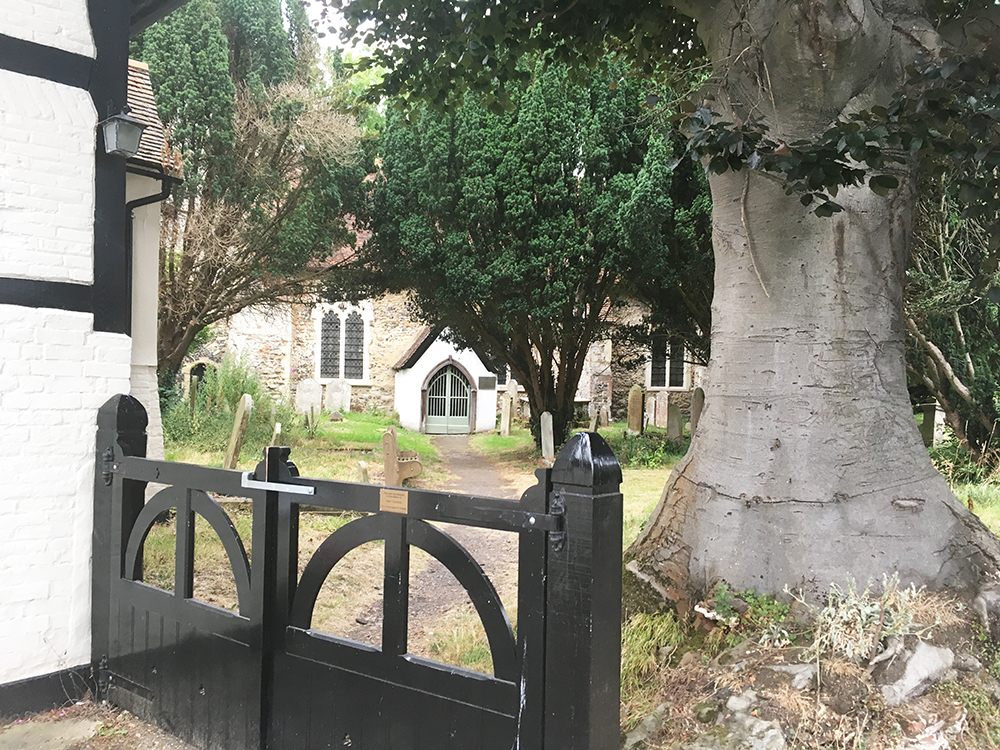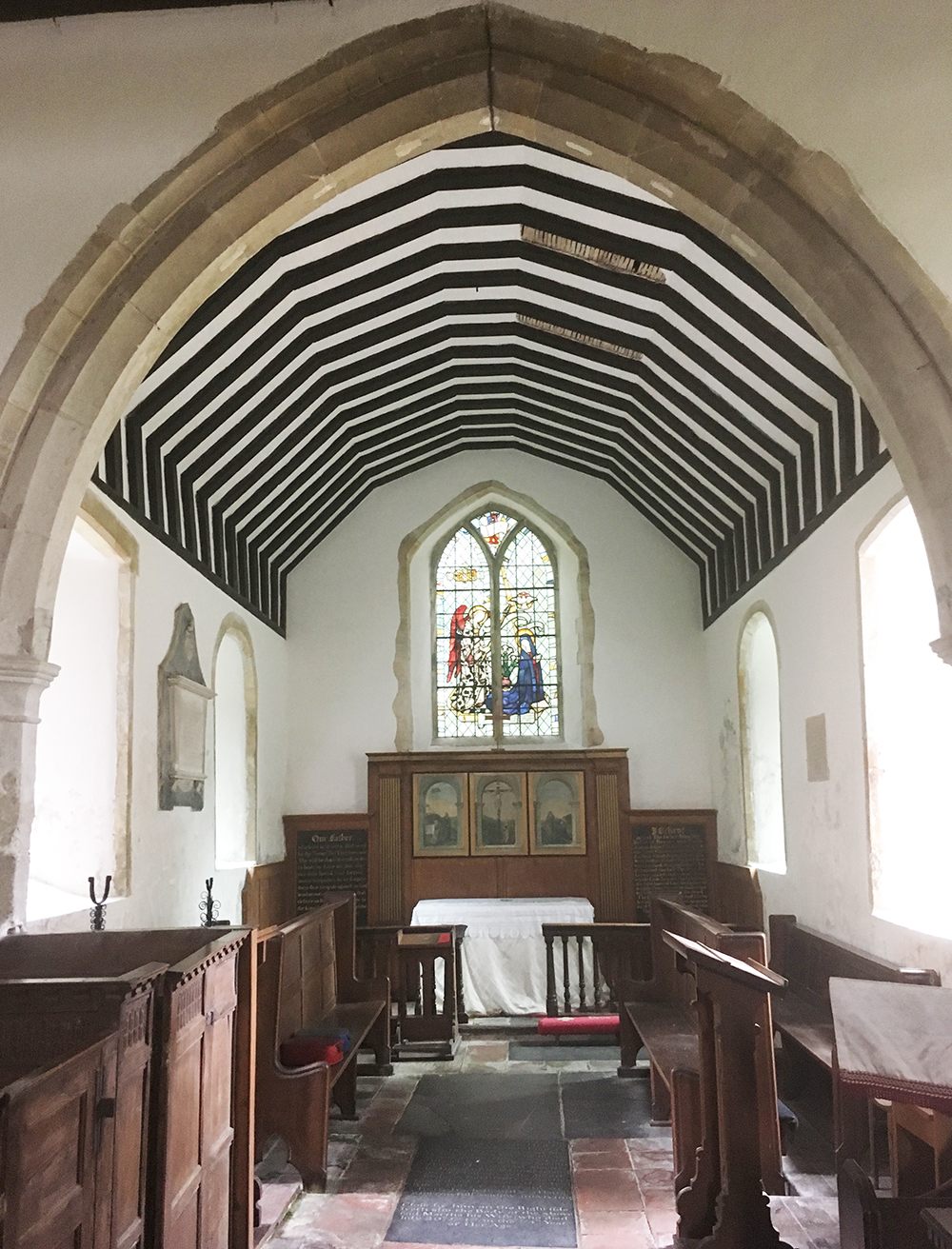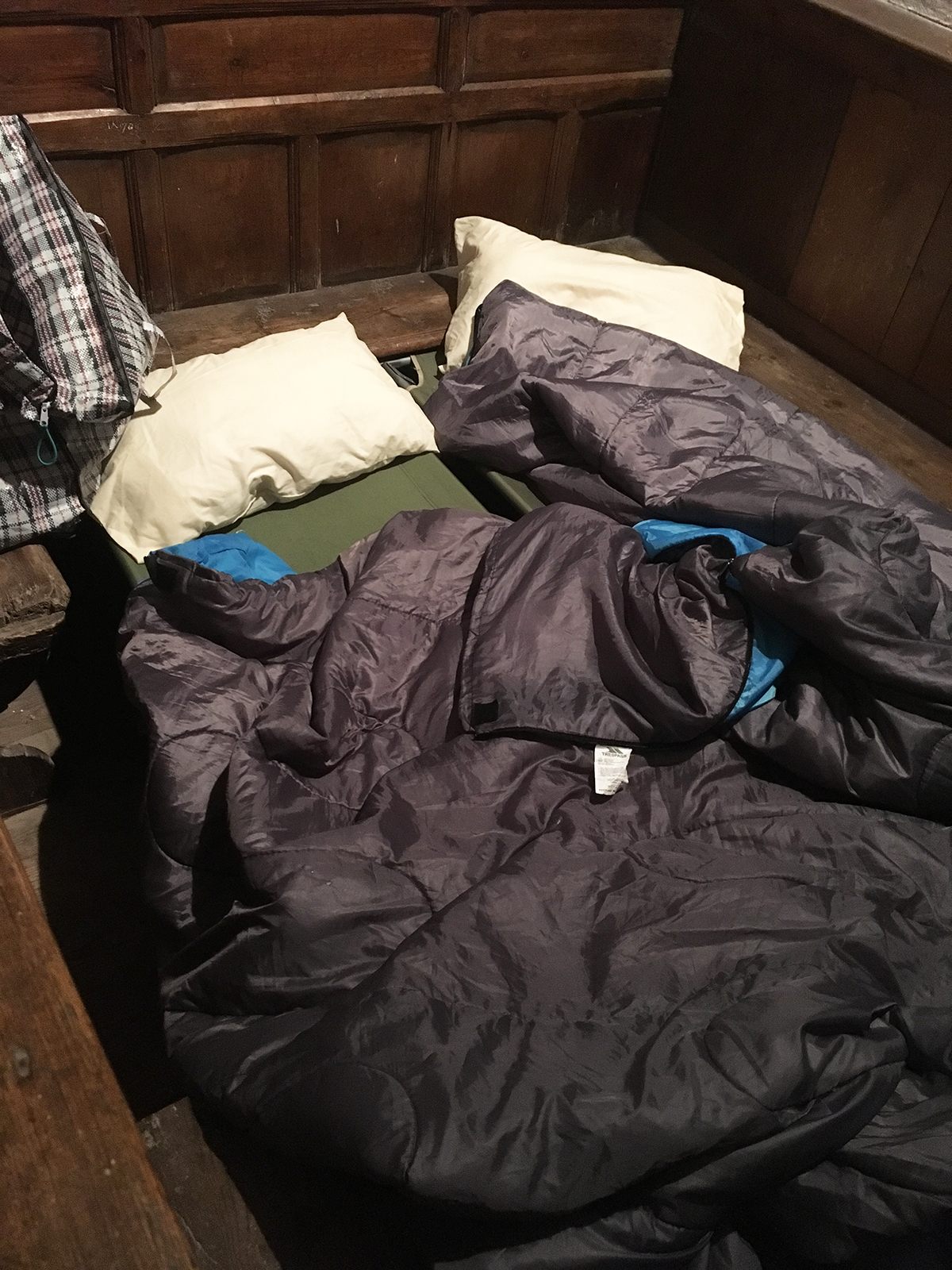In England, You Can Camp in Abandoned Medieval Churches
“Champing” supports the upkeep of village churches, while offering travelers a unique overnight stay.

Throughout Southeast England, a small batch of modern pilgrims have been traveling to visit and sleep in ancient churches. They’re not necessarily seeking a religious experience—rather, they are part of a modern movement called champing, a portmanteau for church camping.
Organized through the Churches Conservation Trust, an organization that oversees the preservation of historic churches throughout the country, champing provides rural villages a way of offsetting the maintenance of these historic buildings, while offering travelers a very unusual place to stay. The Trust’s website promises that “apart from a few weary pilgrims, monks, and a tired vicar or two,” champers will be amongst the first to spend the night in the space.

The Churches Conservation Trust first piloted champing in 2014 at All Saints’ Church in Aldwincle, Northamptonshire. The medieval church, which features limestone arches and a square tower, is situated on the outskirts of town. Visitors can pass their time exploring the church, canoeing on the nearby river, or exploring the small village and surrounding woodlands and meadows. From the church tower, guests are offered a sprawling view of the surrounding countryside. Just under three hours from London, the church is conveniently located for city dwellers looking for a unique getaway.
In 2015, the Trust expanded their offerings to four churches. That year, nearly 300 people stayed overnight during the champing season, which runs from May until September. In 2016, nearly 650 champed in the seven available churches. These champers were mostly between 26 and 44 and from urban locations. Most were couples, but there were also many families with children, not to mention seasoned walkers, cyclists, and canoeists. Though there are no specific records, the Conservation Trust reports that a handful of guests champed more than once in the season.

The location of the champing churches might explain the appeal to these demographics. All of the current churches are in southeast England, no more than two or three hours from London, making them convenient for weekend getaways. All are located in small villages that have few tourist attractions, but are close to charming traditional English towns and areas of natural beauty.
One of the more popular destinations is in Fordwich, England’s self-proclaimed smallest town. Located along the Stour River, it was in the Middle Ages a port for boats making their way to Canterbury, two miles upriver. Though the town is little more than a bend in the road as you make your way south from the town of Sturry towards the eastern end of the Kent Downs, it played a small, if vital, role in both the protection of Britain from outside invaders and in the economic development of the towns upriver.

At the center of town sits the Church of St. Mary the Virgin. The original structure was built in the Norman era and was expanded in the 1200s. Legend has it that St. Augustine, the Benedictine monk who reintroduced Christianity to England in 600 A.D., is buried outside of the church’s north wall. Some evidence suggests that Shakespeare may have performed inside during his exile from London during the plague.
On one wall is listed the names of the church’s rectors beginning in 1283. Tomb markers on the floor date back to the 17th century. Historically the center of the town’s spiritual life, the church has been closed since 1995, but in 2015 it was resurrected as a spot for champing. Though the town offers little more than two pubs and an historic town hall, its location along the Stour River provides guests with easy access to hiking trails and canoeing note.
Proximity to nature is the primary draw of St Michael the Archangel Church in Booton, one of the top three most popular champing destinations in 2016. Located in the countryside along the Marriot’s way footpath, the location is ideal for hikers and cyclist looking for a secluded place to spend the night. The nearby Bure Valley Railway offers families the opportunity to ride a traditional steam engine train throughout the scenic countryside.

Though champing churches are open to the public during the day, guests have the entire church to themselves for the night, when they are free to explore every nook and corner. Local volunteers prepare the church for arriving guests, providing electric candles, light snacks, bottled water, and camping chairs, as well as sleeping bags and pillows for international guests who may not have been able to bring such bulky items.
As these provisions suggest, champing is a true camping experience, not a hotel; the churches are all unheated and have no running water, and all but two lack traditional toilets. Instead, churches are equipped with dry-separating toilets. According to the pre-arrival packet provided for guest, the toilet “does exactly what it sounds like…When using the loo, you must sit down, even the male of the species…When you sit down the mechanism works that opens the two containers below…it doesn’t whiff, honest.”

This jokey tone is typical of Churches Conservation Trust material. In contrast with the ancient beauty of the churches, the Trust’s correspondence is surprisingly chatty. ”It’s nearly Champ O’Clock,” guests are informed via email prior to arrival. In answer to whether champers need to be Christian, the website FAQ assures us that “that’s like saying that you need to be…a teenager to shriek at a One Direction concert (…ahem)!” Elsewhere, the FAQ informs guests that “the space had adapted to the requirements in the previous centuries and champing is just the latest chapter in this ongoing tradition of change.”
It remains to be seen whether champing will be enough to offset the expense required to upkeep these churches, though the modest growth seen between 2015 and 2016 was enough for the Trust to expand its offerings for the 2017 season. Starting in May, champers will have their choice of 12 new churches spread across all of England, not just the southeast. The Churches Conservation Trust will also look for ways to broaden its appeal by offering tiered pricing structure based on guests’ desired level of comfort, promoting the option for guests to visit more than one church per season, offering licensed merchandising, and improving the amount of local information on the local area for champers.

If recent trends continue, there will be no shortage of churches available for champing. In the past 15 years, the number of Britons identifying themselves as Christian has dropped from 75 percent to 25 percent, and only 1.4 percent of Britons attend weekly church services. The Church of England reports that nearly 20 additional churches are closed to worship each year.
Some of these churches are offered for sale to be turned into private residences or commercial spaces, but others will join the 350 non-operational churches currently overseen by the Trust. Champing is perhaps the last chance for preservation of some of these ancient churches, which were central to English life for so long.


















Follow us on Twitter to get the latest on the world's hidden wonders.
Like us on Facebook to get the latest on the world's hidden wonders.
Follow us on Twitter Like us on Facebook